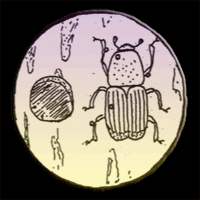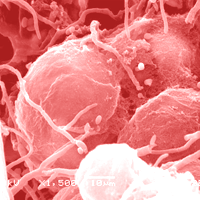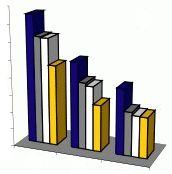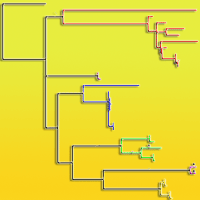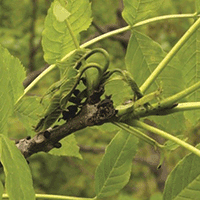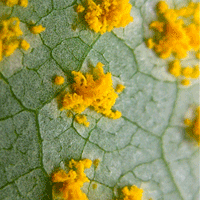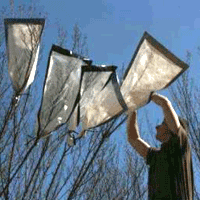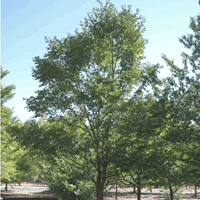
Seven Ulmus minor clones tolerant to Ophiostoma novo-ulmi registered as forest reproductive material in Spain
Juan Antonio Martín (1), Alejandro Solla (2), Martin Venturas (1), Carmen Collada (1), Jorge Domínguez (1), Eva Miranda (1), Pablo Fuentes (3), Margarita Burón (1), Salustiano Iglesias (4), Luis Gil (1)
iForest - Biogeosciences and Forestry, Volume 8, Issue 2, Pages 172-180 (2015)
doi: https://doi.org/10.3832/ifor1224-008
Published: Aug 13, 2014 - Copyright © 2015 SISEF
Research Articles
Collection/Special Issue: 3rd International Elm Conference, Florence (Italy - 2013)
The elms after 100 years of Dutch Elm disease
Guest Editors: A. Santini, L. Ghelardini, E. Collin, A. Solla, J. Brunet, M. Faccoli, A. Scala, S. De Vries, J. Buiteveld
Abstract
The Spanish elm programme began in 1986 in response to the devastating impact of Dutch elm disease on natural elm stands and urban trees. Its main objectives were to conserve remaining genetic resources and select and breed tolerant native elm genotypes. After 27 years of work conducting susceptibility trials on thousands of elm genotypes, the first seven tolerant Ulmus minor trees are now being registered by the Spanish Environmental Administration. This paper presents the results of the susceptibility tests on these clones and their distinctive genetic, morphological and phenological features. In all susceptibility trials the commercial “Sapporo Autumn Gold” clone, which is highly tolerant to O. novo-ulmi, was used as a control. The registered clones were named “Ademuz”, “Dehesa de la Villa”, “Majadahonda”, “Toledo”, “Dehesa de Amaniel”, “Retiro” and “Fuente Umbría”. The most tolerant clone was “Dehesa de Amaniel”, as its wilting values were below 5% during the two consecutive inoculation trials performed in Madrid. “Fuente Umbría”, tested over four consecutive years in Guadalajara and Palencia, was the Spanish clone with the most reliable tolerance level to O. novo-ulmi. The “Ademuz” and “Majadahonda” clones had the highest ornamental scores and are promising trees for use in urban environments and tree breeding for ornamental quality. These two genotypes showed a later bud burst phenology than the other U. minor clones, demonstrating suitability to areas with late frost events. The Spanish programme aims to substantially increase the range of tolerant native elms through new selections and crossings to gain a better understanding of the genetic basis of resistance.
Keywords
Dutch Elm Disease, Breeding, Plant Release, Resistance, Invasive Species
Authors’ Info
Authors’ address
Martin Venturas
Carmen Collada
Jorge Domínguez
Eva Miranda
Margarita Burón
Luis Gil
ETSI Montes, Universidad Politécnica de Madrid, Ciudad Universitaria s/n, E-28040 Madrid (Spain)
Ingeniería Forestal y del Medio Natural, Universidad de Extremadura, Avenida Virgen del Puerto 2, E-10600 Plasencia (Spain)
Institute of Evolutionary Biology, The University of Edinburgh, West Mains Rd., Edinburgh EH9 9JT (United Kingdom)
Dirección General de Desarrollo Rural y Política Forestal, Ministerio de Medio Ambiente y Medio Rural y Marino, c/ Ríos Rosas 24, E-28003 Madrid (Spain)
Corresponding author
Paper Info
Citation
Martín JA, Solla A, Venturas M, Collada C, Domínguez J, Miranda E, Fuentes P, Burón M, Iglesias S, Gil L (2015). Seven Ulmus minor clones tolerant to Ophiostoma novo-ulmi registered as forest reproductive material in Spain. iForest 8: 172-180. - doi: 10.3832/ifor1224-008
Academic Editor
Alberto Santini
Paper history
Received: Dec 30, 2013
Accepted: May 21, 2014
First online: Aug 13, 2014
Publication Date: Apr 01, 2015
Publication Time: 2.80 months
Copyright Information
© SISEF - The Italian Society of Silviculture and Forest Ecology 2015
Open Access
This article is distributed under the terms of the Creative Commons Attribution-Non Commercial 4.0 International (https://creativecommons.org/licenses/by-nc/4.0/), which permits unrestricted use, distribution, and reproduction in any medium, provided you give appropriate credit to the original author(s) and the source, provide a link to the Creative Commons license, and indicate if changes were made.
Web Metrics
Breakdown by View Type
Article Usage
Total Article Views: 65435
(from publication date up to now)
Breakdown by View Type
HTML Page Views: 51741
Abstract Page Views: 6350
PDF Downloads: 5799
Citation/Reference Downloads: 39
XML Downloads: 1506
Web Metrics
Days since publication: 4125
Overall contacts: 65435
Avg. contacts per week: 111.04
Citation Metrics
Article Citations
Article citations are based on data periodically collected from the Clarivate Web of Science web site
(last update: Mar 2025)
Total number of cites (since 2015): 42
Average cites per year: 3.82
Publication Metrics
by Dimensions ©
Articles citing this article
List of the papers citing this article based on CrossRef Cited-by.
References
Atlas fitoclimático de España. Taxonomías [Phytoclimatic atlas of Spain. Taxonomy]. Instituto Nacional de Investigaciones Agrarias, Ministerio de Agricultura Pesca y Alimentación, Madrid, Spain. [in Spanish]
Gscholar
Once and future elms: classical and molecular approaches to Dutch elm disease resistance. In: “The elms: breeding, conservation and disease management” (Dunn CP ed), Kluwer Academic Publishers, Boston, USA, pp. 231-248.
Gscholar
The Dutch elm breeding program. In: “Dutch Elm Disease Research: Cellular and Molecular Approaches” (Sticklen MB, Sherald JL eds). Springer Verlag, New York, USA, pp. 16-25.
Gscholar
Normativa de comercialización de material forestal de reproducción [Marketing regulations for forest reproductive material]. In: “Manual para la Comercialización y Producción de Semillas y Plantas Forestales. Materiales de Base y Reproducción” (Alía A, Alba N, Agúndez D, Iglesias S eds), Organismo Autónomo Parques Nacionales, Ministerio de Medio Ambiente, Madrid, Spain, pp. 39-58. [in Spanish]
Gscholar
Algunos aspectos relevantes sobre la taxonomía de los olmos ibéricos [Some relevant aspects of the taxonomy of Iberian elms]. In: “Los olmos y la grafiosis en España” (Gil L ed). ICONA, Madrid, pp. 69-98. [in Spanish]
Gscholar
Seasonal fluctuations in susceptibility of young elm seedlings to Dutch elm disease. Phytopathology 53: 846-853.
Gscholar
Asian elms: sources of disease and insect resistance. In: “The elms: breeding, conservation and disease management” (Dunn CP ed). Kluwer Academic Publishers, Boston, USA, pp. 215-230.
Gscholar
Spanish program for the conservation and breeding of elms against DED. In: “The Elms: Breeding, Conservation and Disease Management” (Dunn CP ed), Kluwer Academic Publishers, Boston, pp. 295-303.
Gscholar
Screening European elms for resistance to Ophiostoma novo-ulmi. Forest Science 51: 134-141.
Gscholar
Genetic variation and heritability estimates of Ulmus minor and U. pumila hybrids for budburst, growth and tolerance to Ophiostoma novo-ulmi. iForest [submitted].
Gscholar
USDA genetic research on elms. In: “The Elms: Breeding, Conservation and Disease Management” (Dunn CP ed). Kluwer Academic Publishers, Boston, USA, pp. 271-278.
Gscholar
Insect vector behavior and the evolution of Dutch elm disease. In: “The Elms: Breeding, Conservation and Disease Management” (Dunn CP ed). Kluwer Academic Publishers, Boston, MS, USA, pp. 47-60.
Gscholar

